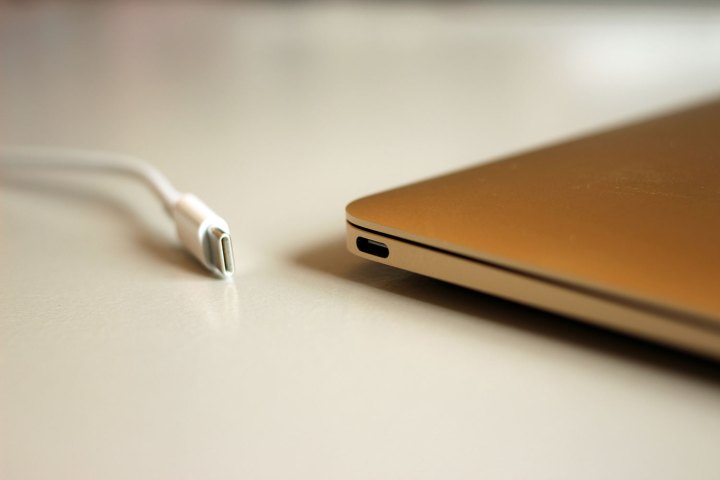
For the uninitiated, the big deal with USB Type-C is that it uses a 24-pin, double-sided connector, so there’s no dedicated up or down when connecting devices to a USB Type-C port. It also supports the USB 3.1 protocol, meaning users will see transfer speeds of up to 10Gb per second. The USB Type-C port also supports adapters that can output DisplayPort, HDMI, and VGA, enabling the use of external graphics cards. Apple already offers a USB Type-C port in its MacBooks as a power port.
This latest report by the supply chain sources has, of course, stirred up the rumor hornets regarding Apple’s new MacBook Air. The company was expected to reveal new models packed with a USB Type-C port supporting the Thunderbolt 3 protocol by the end of June. In turn, it was believed that these new models would start shipping to retailers some time in August. As we’ve already seen, the new MacBook Air design has yet to surface.
As Macrumors points out, Apple hasn’t released a new MacBook Air in more than 500 days, save for increasing the system memory on the 13-inch model to 8GB in April. There’s speculation that Apple may eventually discontinue making new MacBook Air devices, especially if the company can sell the 12-inch MacBook for a starting price of $999.
Previous reports pointed to the end of this year’s second quarter as the release window for new “ultrathin” 13-inch and 15-inch MacBooks. These devices were to have a form factor thinner than the MacBook Air and share the design used in the current 12-inch MacBook. That launch window has obviously passed, and now these ultrathin MacBooks are slated to arrive in this half of 2016. They’ll reportedly feature special metal injection molded hinges to help keep the devices thin.
Ultimately, three new MacBook models are expected to arrive before the end of 2016: a superthin 13-inch MacBook before the end of September, and superthin 13-inch and 15-inch MacBook Pro models between September and December. Perhaps because these models are indeed thin and light, Apple has no reason to continue the MacBook Air family.
As for the report that stirred up the Apple rumor nest, Asus and HP are reportedly upgrading the USB ports offered in their notebooks to USB Type-C. Acer, Dell, and Lenovo are said to be still evaluating the use of this technology. USB Type-C isn’t expected to be made widely available in the mainstream notebook sector until next year.
The reason many OEMs are hesitant in using USB Type-C technology in their notebooks stems from the tech’s need for a larger electric current than previous USB interfaces. In turn, there’s concern over heat dissipation and interference. Second, the technology is reportedly more expensive, requiring a specific transmission wire, a receiver chip, and an amplifier chip.
Editors' Recommendations
- These 6 tweaks take MacBooks from great to nearly perfect
- If you buy one MacBook Air alternative, make it this one
- The case for buying the M2 MacBook Air over the M3 model
- Which color MacBook should you buy? Here’s how to pick
- Why you should buy a MacBook Air instead of a MacBook Pro


